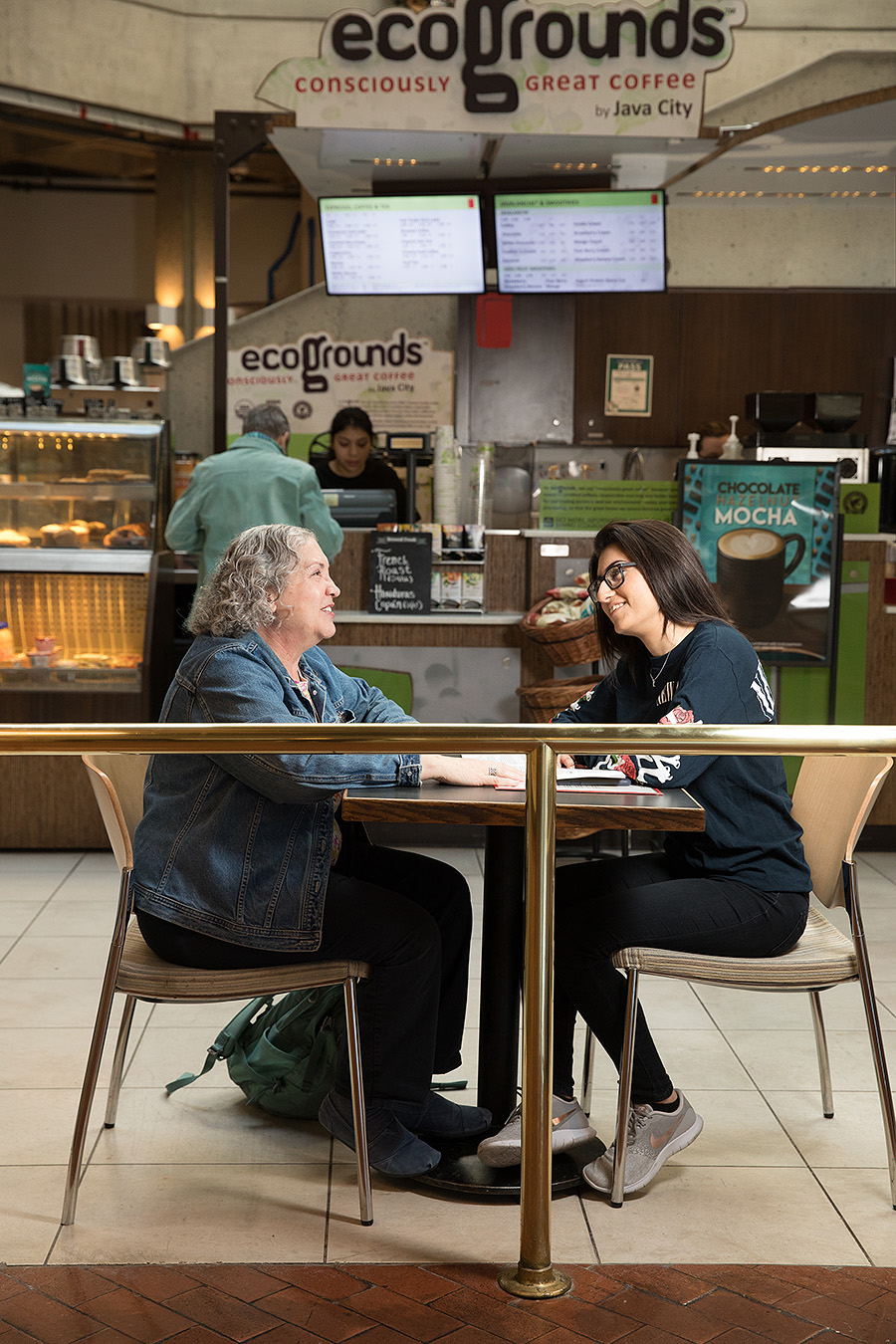 Though they won't be talking in person, students participating in the state-sanctioned Social Bridging project will have one-on-one time with older Californians feeling effects of social isolation. (Sacramento State/Andrea Price)
Though they won't be talking in person, students participating in the state-sanctioned Social Bridging project will have one-on-one time with older Californians feeling effects of social isolation. (Sacramento State/Andrea Price)By Cynthia Hubert
Sacramento State Gerontology students soon will make personal telephone calls to older Californians who are isolated by the coronavirus pandemic, part of a statewide effort to help vulnerable seniors cope with the crisis.
The Social Bridging Project is a partnership among the Governor's Office; state Department of Aging; United Airlines employees in San Francisco, San Jose and Los Angeles; volunteers trained in FEMA disaster response; and students studying Gerontology at Sac State. Other partners could be added in the coming weeks.
Gov. Gavin Newsom recently called on California to connect with older residents through his “Stay Home, Save Lives, Check In” initiative. The latest effort, led by Listos California, expands the initiative’s reach. Listos, which means “ready” in Spanish, runs emergency preparedness campaigns in the state through the Governor's Office.
The goal is to build communication bridges to older adults through direct, personal phone calls. Callers will be trained to assess basic needs, make referrals for various resources, and simply listen to people who may be feeling particularly lonely. Seniors are considered among the most vulnerable to COVID-19, the illness caused by coronavirus. Many are confined to care homes that now bar outside visitors.
KCRA: California effort to help seniors includes Sac State partnership
Studies have linked prolonged social isolation to a host of health problems, including depression, anxiety and cognitive decline.
Sac State’s nationally recognized Gerontology program focuses on aging and its physical, mental, social and other effects. Its curriculum encompasses Physiology, Psychology and other disciplines to study aging “across the life spectrum,” said Department of Gerontology Chair Cheryl Osborne.
Its students, who work in the classroom and within the community to develop and hone skills designed to help people as they age, are perfectly suited to take part in the social bridging effort, she said.
“We’re excited to be part of the project,” Osborne said. “Our students will be checking in on people, answering questions about resources, and lending a listening ear to seniors who have to stay at home.”
Even before the coronavirus forced people inside, Listos California planned to launch a telephone outreach campaign using voter registration rolls to prepare vulnerable people, including older adults, for the upcoming wildfire season. Organizers quickly realized their efforts could be used to reach out to seniors who may need help navigating the impacts of the virus.
“Our ‘social bridgers’ will reach out to the most isolated older adults, those living in pandemic hot spots, and those likely to be facing food insecurity,” said Listos California’s Justin Knighten. “By identifying needs and the resources to meet them, we can help more older Californians survive this pandemic. We will assure older Californians: you are not alone.”
Sac State is recruiting student volunteers to take part in the program, Osborne said. Participants will undergo training before launching phone calls, she said.
The University’s Gerontology graduates enter careers in public and private sectors, working as analysts, counselors, advocates, social workers, and program directors, among other areas. Many continue their education and gain professional credentials in fields including psychology, social work, and nursing.
Their skills are increasingly coveted as policymakers and public and private agencies anticipate a rush of people nearing retirement age.
A 2018 Census Bureau report shows that seniors soon will outnumber children in the United States for the first time.
Osborne noted that Gerontology students are schooled in a wide variety of disciplines, including mental health concerns and elder abuse. In the new program, they will be prepared to pass along any relevant information they gather to agencies that serve such needs.
“The Social Bridges program will allow them to serve in a capacity that meets community needs at a critical time,” Osborne said. “It also will give them the opportunity to put into use all of the things they’re learning at school.”
